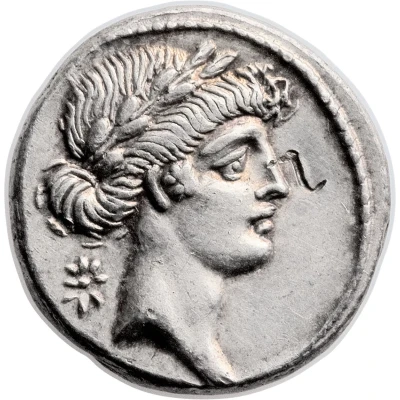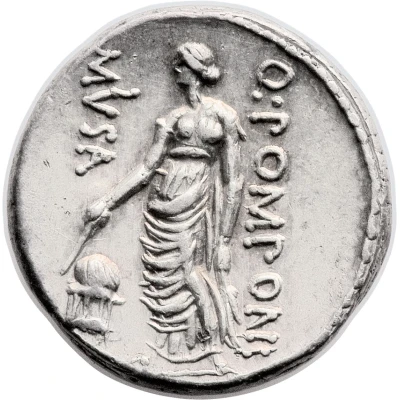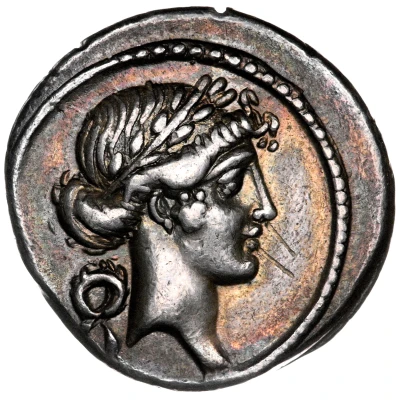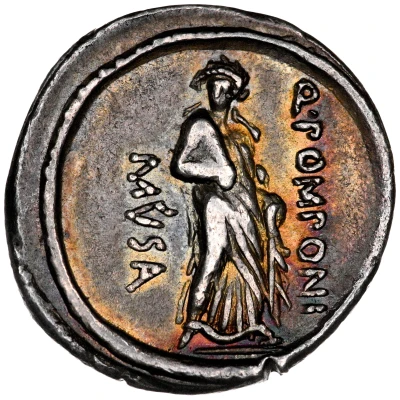


© Heritage Auctions
Denarius Pomponia: Quintus Pomponius Musa; Q•POMPONI MVSA; Thalia 66 BC
66 BC year| Silver | 3.74 g | 19 mm |
| Issuer | Rome › Roman Republic (509 BC - 27 BC) |
|---|---|
| Period | Republic (509 BC - 27 BC) |
| Type | Standard circulation coin |
| Year | 66 BC |
| Value | Denarius (1) |
| Currency | Denarius of 16 Asses (141 – 27 BC) |
| Composition | Silver |
| Weight | 3.74 g |
| Diameter | 19 mm |
| Shape | Round (irregular) |
| Technique | Hammered |
| Orientation | Variable alignment ↺ |
| Demonetized | Yes |
| Updated | 2024-10-06 |
| Numista | N#66845 |
|---|---|
| Rarity index | 100% |
Reverse
Thalia, the Muse of Comedy, standing left, holding comedy mask in right hand and leaning with left elbow on column.
Moneyer mark in two parts downwards on either side.
Border of dots.
Script: Latin
Lettering:
Q•POMPONI
MVSA
Translation: Quintus Pomponius Musa
Edge
Plain
Comment
The gens Pomponia was a plebeian family at Rome throughout the period of the Republic and into imperial times. The first of the gens to achieve prominence was Marcus Pomponius, tribune of the plebs in 449 BC; the first who obtained the consulship was Manius Pomponius Matho in 233 BC.The moneyer Quintus Pomponius Musa plays on his name here by striking a 10-coins as a serie related to the myth of the Muses: 9 coins representing the 9 Muses along with one coin representing Hercules. Hercules is known in Greece, and as represented on this coin, as Hercules Musarum or Hercules Musageta, meaning Hercules, leader of the Muses.
Mass varies: 3.33–4.14 g;
Diameter varies: 17–20 mm;
Interesting fact
The Denarius coin features a portrait of Thalia, the Greek muse of comedy and pastoral poetry, on its reverse side. This is interesting because it highlights the cultural exchange and influence of Greek art and mythology on Roman coinage during the Roman Republic period.



